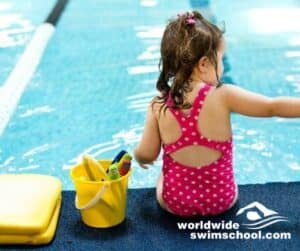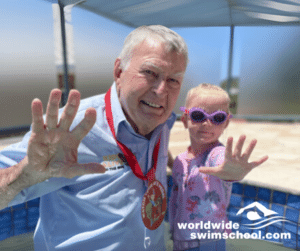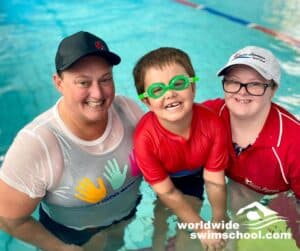April is Autism Month and is about raising awareness, celebrating and advocating for inclusion of autism. Explore essential education on autism with practical understanding and support strategies. Enhance your knowledge and make a positive impact—read more now!
Education on Autism
Autism Spectrum Disorder (ASD) is a neurodevelopmental condition that affects communication, social interaction, and sensory processing. While aquatic activities offer significant benefits for individuals with autism, they can also present unique challenges. The aquatic environment can be overwhelming due to sensory sensitivities, difficulties with motor coordination, and challenges in understanding instructions. However, with the right strategies, swimming and water-based activities can provide immense physical, emotional, and social benefits for individuals on the autism spectrum.
Challenges of Autism in the Aquatic Environment
1. Sensory Sensitivities
Many individuals with autism spectrum disorder experience heightened or reduced sensitivity to sensory stimuli. The aquatic environment can be overwhelming due to factors such as water temperature, echoing noises in swimming pools, bright lighting, or the sensation of water on the skin. Sudden splashes or the unpredictability of movement in a pool can cause distress, leading to anxiety or avoidance of aquatic activities.
2. Communication Barriers
Understanding verbal instructions and processing information in a fast-paced environment can be challenging for some individuals with autism spectrum disorder. Traditional swimming lessons often rely on verbal cues and demonstrations, which may not always be effective for those who struggle with receptive language skills. Additionally, individuals who are non-verbal or have limited speech may find it difficult to communicate their needs, fears, or discomfort in the water.
3. Motor Coordination and Balance
Many children and adults with autism spectrum disorder experience challenges with motor coordination, balance, and body awareness (proprioception). Learning to float, coordinating breathing with movement, and mastering swimming strokes can require additional time and practice. The unfamiliar sensation of being in the water may also make it difficult for some individuals to regulate their movements effectively.
4. Social Interaction and Routine Dependency
Swimming lessons and aquatic environments often involve group participation, requiring individuals to engage with instructors and peers. For those with autism, social interaction can be challenging, particularly in a setting where communication and turn-taking are expected. Additionally, individuals on the autism spectrum often thrive on structure and routine; unexpected changes in lesson format, instructor, or pool conditions can cause distress or confusion.
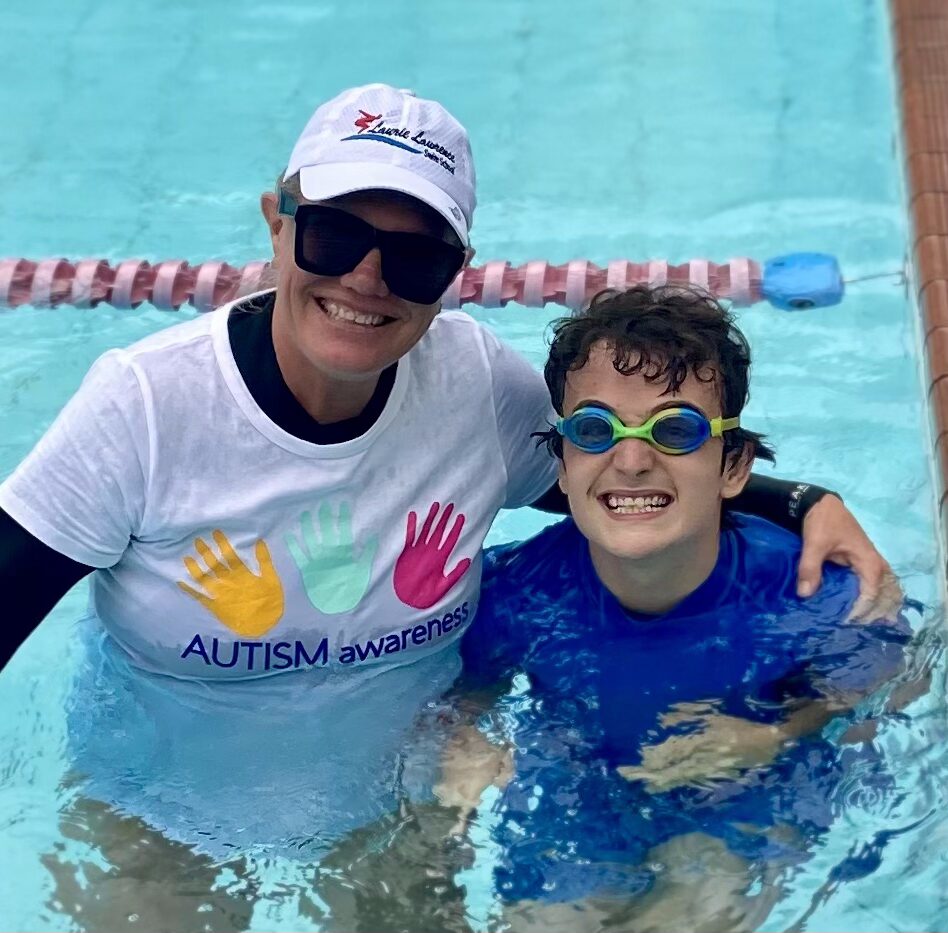
Strategies to Support Individuals with Autism in the Aquatic Environment
1. Creating a Sensory-Friendly Environment
To support individuals with autism spectrum disorder, swimming teachers and aquatic facilities can implement sensory-friendly adjustments. This may include dimming bright lights, reducing background noise, and ensuring that water temperature remains consistent. Providing sensory breaks and gradual exposure to new aquatic experiences can also help individuals become more comfortable.
2. Using Visual Supports and Clear Communication
Visual supports, such as a vision board, number cards, behavioural cards and counting cue cards, can enhance understanding and reduce anxiety. Demonstrating skills using clear, step-by-step visuals and allowing individuals to process information at their own pace can improve learning outcomes. Instructors should also use simple, concise language and allow extra processing time for instructions.
3. Individualised Instruction and Adapted Teaching Methods
Recognising that every individual with autism spectrum disorder has unique needs, adapted teaching approaches are essential. Some may benefit from one-on-one instruction rather than group lessons, while others may need additional time to adjust to new skills. Using positive reinforcement and allowing individuals to progress at their own pace fosters confidence and skill development.
4. Encouraging Predictability and Routine
Establishing predictable lesson structures can provide a sense of security for individuals with autism. Using the same instructor, starting with familiar warm-up activities, and maintaining a consistent lesson format helps build trust and comfort. Informing individuals in advance about any changes to their routine can also reduce anxiety.
5. Promoting Social Inclusion and Understanding
Educating instructors, parents, and peers about autism can create a more inclusive aquatic environment. Training swimming instructors in autism-friendly teaching strategies and encouraging patience and understanding among peers can enhance the overall experience for individuals with autism.
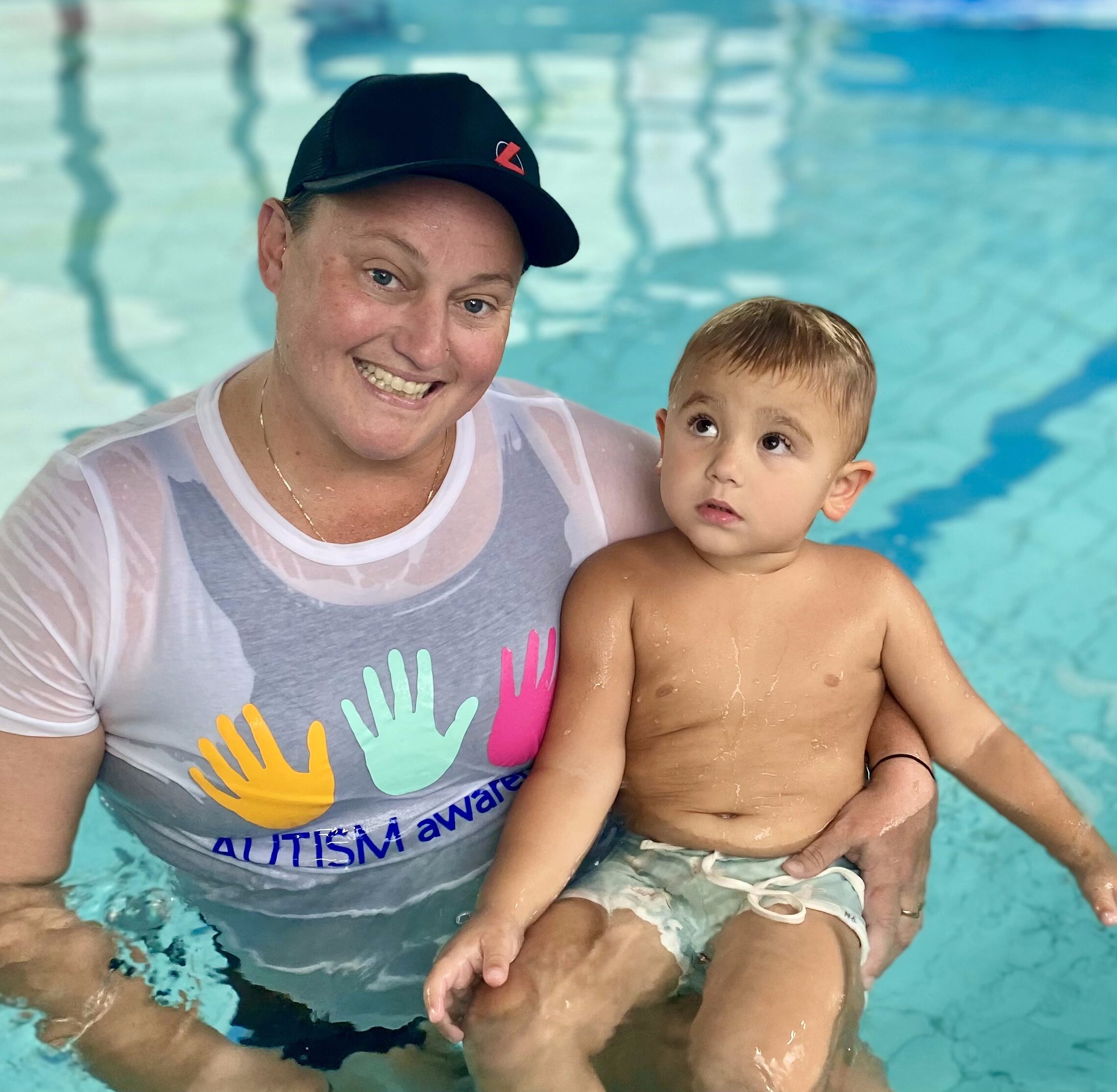
The Amazing Benefits of Aquatic Activities for the Autism Community
Despite the challenges, engaging in aquatic activities offers numerous benefits for individuals on the autism spectrum.
1. Sensory Regulation and Relaxation
Water provides deep pressure and gentle resistance, which can have a calming effect on individuals with sensory processing challenges. Swimming can help regulate sensory input, reducing anxiety and promoting relaxation. Many individuals with autism find the feeling of being submerged in water soothing, which can support emotional well-being.
2. Improved Motor Skills and Coordination
Swimming enhances gross motor skills, balance, and body awareness, making it an excellent activity for individuals with motor coordination difficulties. The buoyancy of water reduces the impact on joints, allowing for greater freedom of movement and promoting muscle strength and endurance.
3. Increased Confidence and Independence
Mastering swimming skills can boost self-esteem and provide individuals with a sense of achievement. As they develop greater confidence in the water, they may also become more independent in managing transitions, following instructions, and engaging in physical activities.
4. Social Interaction and Communication Development
Participating in swimming lessons or group water activities provides opportunities for developing social skills, social interaction, and teamwork. Engaging in shared activities can support the development of communication skills, turn-taking, and cooperative play. Additionally, structured aquatic programs can help individuals with autism build social connections in a supportive environment.
5. Water Safety and Life-Saving Skills
Teaching individuals with autism essential water safety skills is crucial for reducing the risk of drowning, as studies have shown that children with autism are at a higher risk of water-related incidents. Learning how to float, tread water, and respond to emergency situations can be life-saving skills for individuals on the autism spectrum.
Summary
Autism can present unique challenges in the aquatic environment, but with appropriate strategies, individuals with autism can thrive in the water. By creating sensory-friendly spaces, using visual supports, adapting teaching methods, and promoting social inclusion, swimming can become an accessible and enjoyable activity.
The benefits of aquatic activities extend beyond physical health, offering opportunities for sensory regulation, motor skill development, social interaction, and overall well-being. As awareness and understanding of autism continue to grow, it is essential to ensure that aquatic environments are inclusive, supportive, and empowering for individuals on the autism spectrum.
Learn more from our community
If you’d like to receive latest offers from Laurie Lawrence as well as many other benefits, join World Wide Swim School Community today - it is FREE!
To celebrate World Autism Month we have savings on our Adapted Aquatics - Autism learning packs. Save 20% until end of April 2025. Get more information here.



